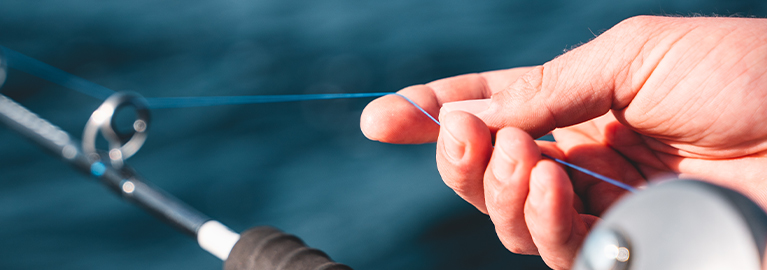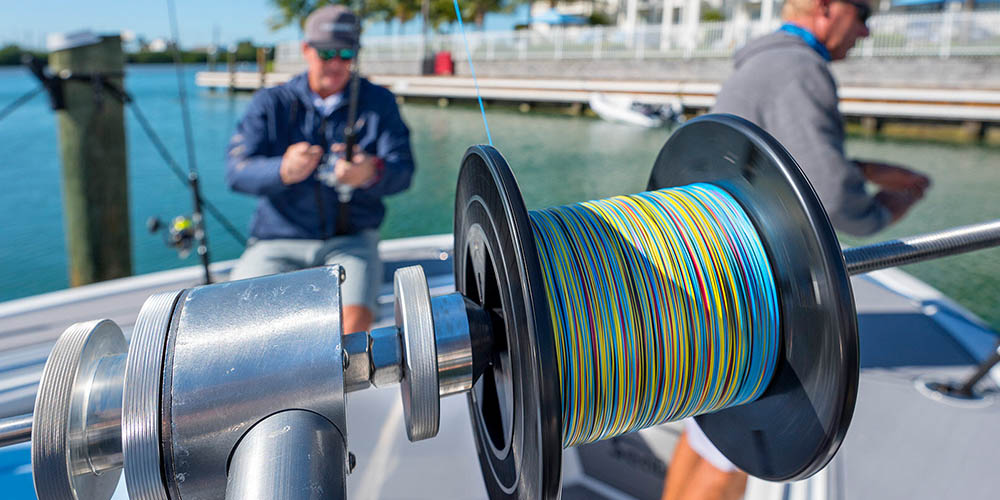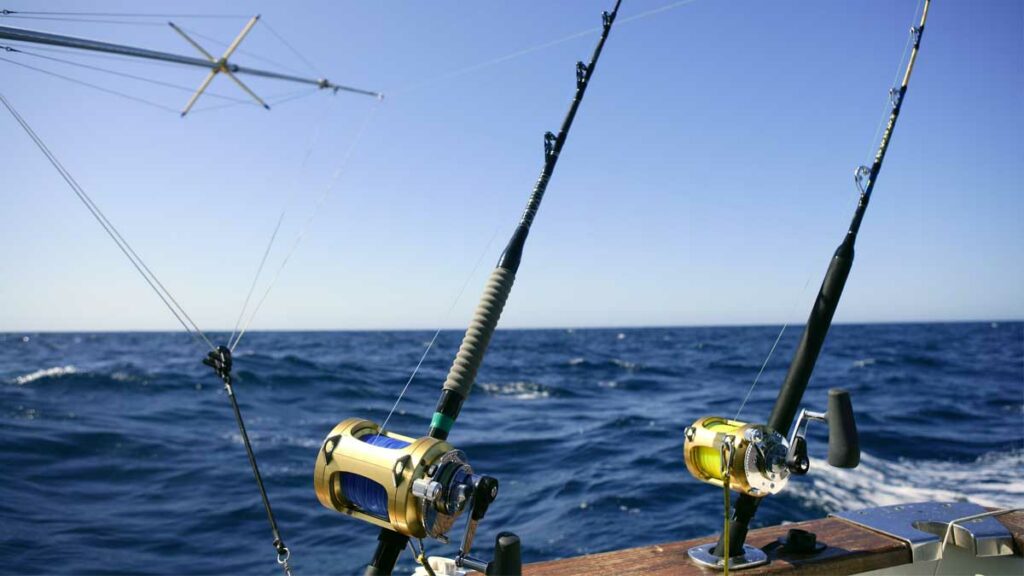Traditionally, bronze and green are great line colors for inshore saltwater fishing, says Mark Schindel, director of sport-fishing and outdoor products at Cortland Line. Muddy substrate, sea-grass flats, oyster bottom, and off-colored water help the line disappear, offering a stealthy approach to stalk fish.
So what is the best-braided fishing line color for saltwater? Does the color of the fishing line matter? The truth is that no one color of the braided line makes it easier to hook a fish, but that shouldn’t prevent fishermen from being careful in their line selection. For this column, we won’t consider any other characteristics involved in today’s braided fishing lines – just the color. Consider these factors the next time you’re in the midst of a colorful assortment of colored fishing lines.
Does Fishing Line Color Matter In Salt Water
Offshore fishing presents many challenges that you would not normally encounter when fishing from shore. You must be prepared for everything, including kitchen zinc. The color of the fishing line matters when fishing in clear streams, but does the color of the fishing line matter in salt water?
The color of your fishing line is irrelevant in salt water. The best option is to draw a blue, green, or clear braided line in very clear water. In deeper water or when fishing at night, you can choose any color line. Clear fluorocarbon is the best choice for saltwater.
A better line to use in very clear salt water is clear monofilament. Using braided lines in very clear water can be a bit of a concern for fish, especially keen-sighted gamefish. When the bait is correct and the fish are hungry, the color of the line is the least of their concerns. We can further explore the different line colors in saltwater.
What Colors Can Saltwater Fish See

Stealth is an important quality when you go fishing. Even the dumbest fish will not take the bait if they see it tied to the line and hook. That’s why choosing the right color is so important.
Scientists are still debating what colors saltwater fish can see. Fish can discern contrast better than humans, so they notice outlines, especially when the color contrasts with the background of the water. Fish have color-detecting cones in their eyes, and scientists suspect that some fish can see colors better than humans because they have ultraviolet cones, but we don’t know what colors fish can see. After all, we can’t ask them.
However, scientists have some theories. Offshore saltwater fish may be able to see most of the same colors as humans. Most offshore fish that live in deeper water see black and white with shades of blue and green. Fish living in deeper waters see fewer colors because they have less exposure to them (more on this later). Some fish, such as sharks, are completely color-blind.
Are Saltwater Fish Sensitive to Color Fishing Line

Some fishermen warn that care must be taken with fishing lines used in saltwater adventures because if the fish can see the line, they won’t bite. When choosing the right fishing gear for saltwater fishing, you need something that will attract fish, and the opposite principle is used when choosing line colors.
Scientists and fishermen are still debating whether saltwater fish are sensitive to the color of the line you use. While fish have optic cone cells in their eyes that can see color, it’s unclear how well they actually see color. They are better able to see contours and use this aspect of vision to navigate underwater. Many scientists say it doesn’t matter which color fishing line is used.
However, anecdotal evidence from fishermen varies widely. Many fishermen swear that they do better with certain colors of fishing lines because it allows them to sneak up on fish.
The color of the fishing line may not be the most important factor in determining fishing success, but why not do your best to make the fishing successful?
Which Color Lines Are Best for Inshore Fishing

Inshore saltwater fishing or standing on the beach, in the estuary, wading, or fishing from the rocks may lead you to choose a different color line.
These darker colors are chosen because of muddy substrates with seaweed and oyster or shell deposits on the bottom. These help camouflage the line well. The darker lines will darken towards the bottom and will not scare or spook the fish.
Clear fluorocarbon is always the “go-to” line because it blends in with any water condition. Whether the water is clear or dark blue, it becomes invisible under salt water. It has been incredibly successful in very clear waters, where fish on alert will not see it.
It is important to note that aggressive and hungry fish do not pay much attention to the color of the line you are casting or trawling. High visibility or neon yellow helps to watch your line for early bite detection when there is a lot of activity.
Conclusion about What Color Line Is Best for Saltwater Fishing
There are several different fishing line colors on the market to choose from. This often makes it difficult for the novice to choose a color option. In my opinion, while there are pros and cons to the different color options, the best fishing line color option is a clear fishing line. This is because it is clear/invisible in most options.
Generally, the color of your line for saltwater fishing will not cost you a strike or trophy fish; however, it is a good idea to try to use matching colors whenever possible. Anything that can give you an edge when fishing will help, and if a flash of color can spook wary fish, choose a line that won’t do any harm!
FAQs about What Color Line Is Best for Saltwater Fishing
Q1: What color fishing line is best for saltwater fishing?
A1: The best color fishing line for saltwater fishing can vary depending on various factors such as water clarity, depth, and target species. However, in general, clear or low-visibility lines such as clear monofilament or fluorocarbon lines are commonly used in saltwater fishing. These lines are less likely to spook fish in clear water conditions.
Q2: Why is a clear fishing line preferred for saltwater fishing?
A2: Clear fishing lines are often preferred for saltwater fishing because they are less visible underwater. In clear water conditions, fish can be easily spooked by brightly colored or high-visibility lines, causing them to become wary and less likely to bite. Clear lines are designed to be less visible, increasing the chances of a successful catch.
Q3: Are there any situations where colored fishing lines are preferred for saltwater fishing?
A3: While clear lines are generally recommended for saltwater fishing, there are certain situations where colored fishing lines can be advantageous. For instance, in situations with poor water clarity or low-light conditions, colored lines such as high-visibility yellow or chartreuse can help in detecting subtle bites or line movement.
Q4: What are the benefits of using fluorocarbon fishing lines in salt water?
A4: Fluorocarbon fishing lines have become increasingly popular in saltwater fishing due to their unique characteristics. Fluorocarbon lines are virtually invisible underwater, which makes them less likely to be detected by fish. Additionally, fluorocarbon has a higher density compared to water, allowing the line to sink faster, making it suitable for fishing at greater depths.
Q5: Are there any drawbacks to using colored fishing lines in salt water?
A5: Colored fishing lines can have a few drawbacks in saltwater fishing. One significant drawback is their visibility underwater. In clear water conditions, brightly colored lines can be easily spotted by fish and may lead to decreased bites or fish becoming spooked. However, in certain situations such as low-light conditions or murky water, colored lines can be advantageous by increasing visibility for the angler.

